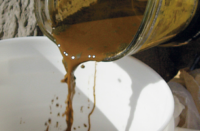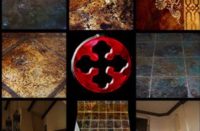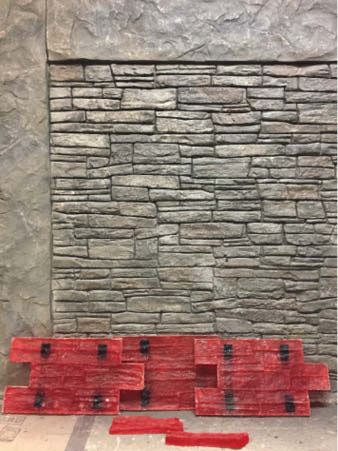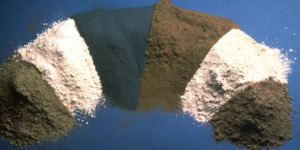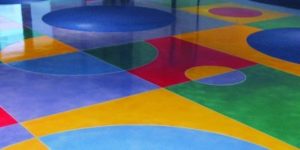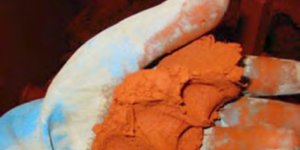Concrete overlays’ strength comes from combining specific amounts of portland cement, sand, water and polymer. Sand type is an important component in decorative concrete and concrete overlays because overlays are typically applied thinner than standard concrete, yet still need to withstand the forces of foot and automobile traffic.
Research and experience with aggregates have taught us that some sand types can break down quickly with heavy use and traffic and can then weaken the concrete over time.
All sands are not the same
Quartz sand is very hard and also usually has no sharp or angular edges as it typically comes from rivers and sand deposits where over the millennia the sharp or angular edges have been worn down.
Limestone, on the other hand, is a softer mineral, so it doesn’t wear down into sand. It wears down into powder, which is why you don’t find deposits of limestone sand. Both limestone powder or derivatives of it are used to make powdered portland cement. Additionally, Limestone sand, which is used in some decorative concrete, is created by crushing limestone rocks to make sand. Limestone sand is soft enough that the angular edges of the grains can be easily crushed, broken and turned to powder.
You can test this yourself by rubbing crushed limestone sand together in your bare hands and watch as it starts to create powder. Concrete overlays with softer sands show wear faster and have more trouble supporting foot traffic, chairs, tables and vehicles because they scuff, scratch, chip and spall. Some even crumble and fail. It’s true that limestone sand in repair mortar has worked great for centuries to fix columns, sculptures and items with no traffic, and it can work well as larger aggregate in standard concrete.
However, if your aggregate or sand fails, it can cause the other ingredients to also fail. This is due to the voids created when the softer sands turn to powder and break the physical bond between all the other ingredients and the substrate.
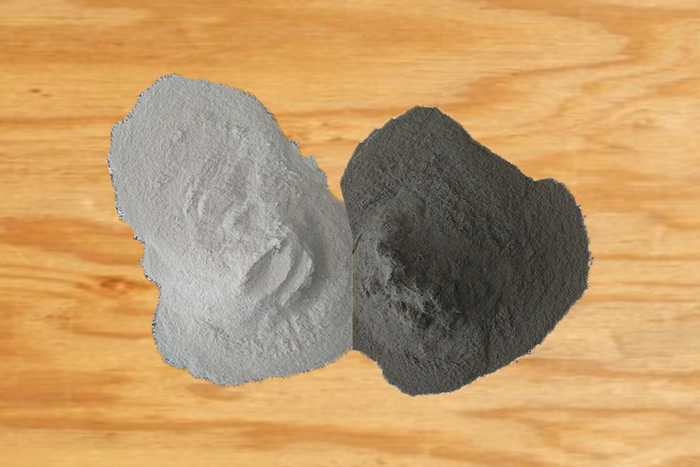
Selection process for ingredients
As a manufacturer, we select ingredients based on many factors, and one of them is the Mohs hardness scale (see chart below). This scale is designed to help people around the world choose the best mineral (sand) for their specific use.
According to the Mohs scale (https://concretedecor.net/decorativeconcretearticles/vol-13-no-4-mayjune-2013/make-tooling-choices-easier-with-the-mohs-hardness-test-kit/), you can see why quartz is used whenever possible when making concrete, decorative concrete and concrete overlays. It’s harder, will stand up to more abuse and also lasts longer.
To be fair, concrete — like natural stone — breaks down over time, but weaker aggregate or sand can break down faster.
Achieving a realistic look
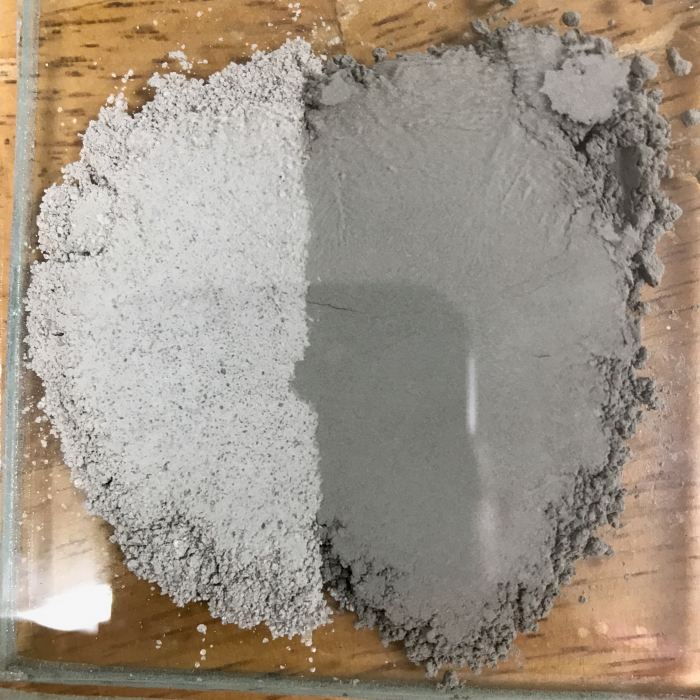
Even if you know the difference when comparing quartz sand and limestone sand, what we’ve found is that a realistic “look” is created by a combination of all the ingredients used in a concrete overlay mix. Once the sand is mixed with the concrete ingredients, you don’t see the sand as anything more than part of the mix. It’s not discernible once it has been immersed, coated and covered with the gray or white portland cement and additive mixture in the dry concrete overlay mix.
Sand plays a minor part in the overall realistic look. The other factors that add to the realism are either the type of polymer or acrylic used in the mix. Other factors are the sealers, pigments, dyes, integral colors and also skill level.
You must factor in the skill of the applying contractor because a skilled contractor can make almost any mix look good, while an unskilled contractor can ruin the look of even the best mix. There are many factors that contribute to a realistic look. Sand is a main contributing factor for strength and form.
|
|
|
Which sand is used most often?
Most industries seem to prefer quartz over limestone sand. Due to its unique properties, quartz sand is predominantly used throughout the concrete, paint and adhesive industries.
Quartz sand helps paint and other products be more chemical resistant. Naturally acid- and wear-resistant because of its hardness and ability to take scrubbing, it improves durability and flowability of paint.
Because of its reinforcement qualities, quartz sand is used in industrial rubber. It’s also used in tire linings as it offers superior adhesion, tear resistance and heat-aging properties. When added to adhesives for tiles, quartz sand improves tensile strength and impact resistance.
Based on our own experience with aggregates and also the information and research available to us, we believe quartz sand is the more durable ingredient to use in a concrete overlay mix that’s going to see foot or vehicle traffic. For long-term durability and stability in general for both residential and commercial projects, quartz sand is the way to go.
| Hardness | Mineral | Observations of Mineral |
| 1 | Talc | Very easily scratched by fingernail. |
| 2 | Gypsum | You can scratch this with a fingernail. |
| 3 | Limestone, Calcite | Very easily scratched with either a knife and/or a copper coin. This is where most marbles, limestones and travertines rate. |
| 4 | Flourite | You can scratch this with a knife |
| 5 | Apatile | A knife has difficulty scratching this mineral; glass is rated in this hardness. |
| 6 | Orthoclase | You cannot scratch this with a knife. This mineral can scratch glass with some difficulty. |
| 7 | Quartz | Can scratch glass easily. This is where the industry rates most granites in terms of hardness. |
| 8 | Topaz | Can scratch glass very easily. |
| 9 | Corundum | Can cut glass. |
| 10 | Diamond | Can scratch virtually anything; is commonly used to cut both glass and stone. |

